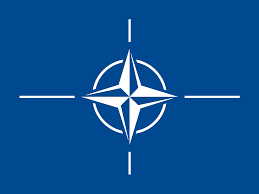
The modern battlespace is increasingly defined by the proliferation of low-cost, highly effective Unmanned Aerial Systems (UAS). While single drones have altered tactical reconnaissance and strike capabilities for years, the emergence of coordinated, autonomous drone swarms represents a paradigm shift in aerial threats. These swarms, capable of saturating and overwhelming conventional air defense systems through sheer numbers, pose a critical challenge to ground forces, critical infrastructure, and naval assets. In response, defense planners and industry leaders are rapidly moving beyond static, point-defense solutions toward developing and fielding integrated, mobile Counter-UAS (C-UAS) architectures designed to protect maneuver forces on a dynamic battlefield.
This shift is not merely an incremental upgrade but a fundamental rethinking of short-range air defense (SHORAD). The strategic imperative is to create a mobile, multi-layered protective bubble that can detect, track, identify, and neutralize dozens of simultaneous threats, restoring freedom of maneuver for ground forces that are otherwise critically vulnerable to observation and attack from above.
The Evolution from Singular Threats to Coordinated Swarms
The trajectory of UAS warfare has been swift and decisive. Early deployments in the post-9/11 era were dominated by large, high-altitude platforms like the MQ-1 Predator and MQ-9 Reaper, which provided persistent intelligence, surveillance, and reconnaissance (ISR) and strike capabilities. However, recent conflicts, particularly in Ukraine and the Middle East, have showcased the disruptive power of smaller, cheaper, and more numerous systems. Commercial off-the-shelf quadcopters adapted for grenade-dropping and one-way attack drones like the Shahed-136 have demonstrated an asymmetric advantage, enabling even non-state actors to contest airspace.
The concept of a swarm elevates this threat exponentially. A true swarm is not simply a mass of drones, but a network of intelligent, communicating agents that can coordinate their actions to achieve a common objective. They can employ complex tactics, such as feinting to draw out air defense fire, dynamically re-tasking based on battlefield losses, and converging on a single high-value target from multiple vectors. This presents a daunting challenge for traditional air defense systems, which are often optimized to engage a small number of high-performance targets like fighter jets or cruise missiles. The unfavorable cost-per-kill ratio of using a multi-million-dollar missile to destroy a drone worth a few thousand dollars is economically unsustainable in a protracted conflict.
Architecting a Mobile, Layered Defense
To effectively counter the swarm threat, a mobile C-UAS architecture must integrate multiple functions into a cohesive system-of-systems. This architecture is built upon three core pillars: advanced sensors, intelligent command and control (C2), and a layered suite of effectors. The key is mobility—integrating these capabilities onto combat vehicles like the Stryker or Bradley, allowing the C-UAS shield to move with the force it is protecting.
Sensor fusion is the foundation. No single sensor can reliably detect and track all types of small UAS in all conditions. Therefore, a mobile platform must combine data from multiple sources: compact radar systems to detect movement, electro-optical/infrared (EO/IR) cameras for visual identification, and radio frequency (RF) detectors to sense the drones’ command links or emissions. AI-driven software then fuses this data into a single, coherent operational picture, reducing the cognitive load on operators and enabling faster decision-making.
The C2 system acts as the brain of the operation. In a swarm attack, threats can materialize in seconds, overwhelming human capacity. AI and machine learning algorithms are essential to rapidly classify threats, assess their intent, prioritize targets based on their proximity and trajectory, and recommend the optimal effector for engagement. This moves the paradigm from a human-in-the-loop, where every action requires approval, to a human-on-the-loop model, where operators supervise an autonomous system that can engage at machine speed.
The Multi-Layered Effector Toolkit
The final pillar is a diverse set of kinetic and non-kinetic effectors. A layered defense provides flexibility and resilience. The first layer is often non-kinetic: electronic warfare (EW) systems designed to jam a drone’s C2 link or its GPS navigation, causing it to lose control and crash or return to its origin. This is a non-destructive, area-effect solution ideal for the initial engagement of a swarm.
For threats that penetrate the EW screen, kinetic options are required. These include 30mm or 50mm cannons firing advanced, airburst munitions that detonate in proximity to the target, creating a shrapnel cloud. Small, guided missiles provide longer-range precision engagement. The most promising emerging technology is directed energy (DE). High-energy lasers (HEL) offer speed-of-light engagement, a virtually unlimited magazine as long as power is available, and an extremely low cost-per-shot. High-power microwave (HPM) systems can disrupt or destroy the sensitive electronics of multiple drones at once, making them a potent anti-swarm weapon.
Strategic Implications and the Path Forward
The development of mobile C-UAS architectures is a strategic necessity. Key actors, including the U.S. Army with its Maneuver-SHORAD (M-SHORAD) program, and defense firms like Raytheon, Leonardo DRS, and Northrop Grumman, are heavily invested in maturing these technologies. The future will likely see greater integration of AI, enabling not just defensive C-UAS swarms but also offensive “counter-swarm” tactics where friendly autonomous systems are deployed to seek out and destroy enemy drones.
Ultimately, the race between UAS threats and C-UAS defenses will continue to accelerate. The ability to deny adversaries the use of the low-altitude airspace is becoming as critical as traditional air superiority. For modern militaries, fielding a robust, mobile, and integrated C-UAS architecture is no longer an option but a prerequisite for survival and success on the 21st-century battlefield.
Source


